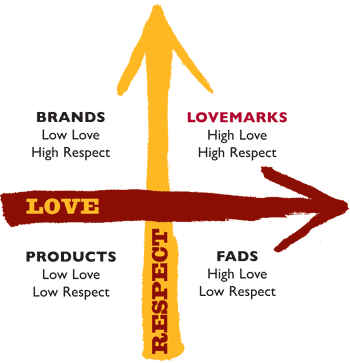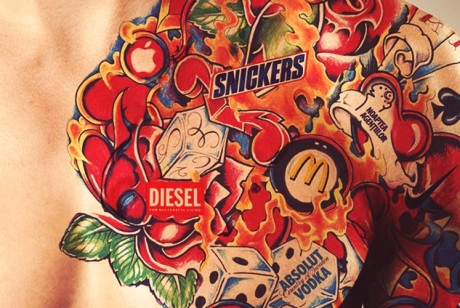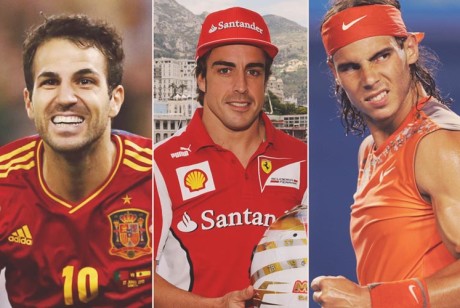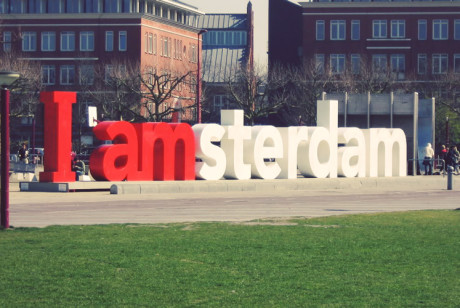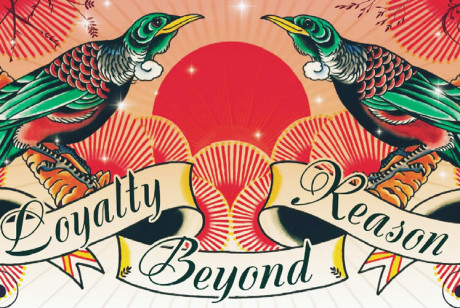Nine Muses
Thursday, 12 August 1999 - Manila, Philippines

Presentation Summary
Keynote address to the Makati Business Club. The structure of global business is in flux. The next few years are going to be filled with massive opportunities all around the world. The successful companies will be a new kind of company. Optimistic, creative companies that make peak performance their goal.
I have come to help celebrate 50 brilliant years of Ace Saatchi & Saatchi. Ace Saatchi & Saatchi is a standout performer of the Philippines advertising industry, and they are an important part of our global Saatchi & Saatchi network.
We have 7000 people working in 152 offices in 92 countries. We treasure creativity. At this year’s annual Olympics of global advertising excellence, the International Advertising Festival in Cannes, Saatchi & Saatchi was number four on the list for creative awards.
The Asian region, along with the Americas and Europe, is one of the three pillars of our global strategy. We have offices in 12 Asian countries, and we are the largest agency in China.
Ace Saatchi & Saatchi has always been one of our peak performing stars in Asia.
Ace Saatchi & Saatchi’s record of creative excellence in the Philippines is unrivalled. They have won the Philippines Creative Guild’s Ad of the Year award 23 times. They have been honoured with awards from our global clients Toyota and Procter & Gamble for their outstanding work on those accounts. They are the current holders of the “Best Creative Agency” in the Philippines.
That’s a tribute to the creative energy of the people who have made up the agency over fifty years. It’s a reflection on the leadership of their Managing Director Rey Icasas. And it is a direct result of the vision of the man who has been chairman for the past thirty years – Arthur Young.
I’m here to celebrate fifty years of brilliant work. But at Saatchi & Saatchi we don’t look back for long. Our attitude is to look forward.
I want to look forward to the next millennium. If you’ve seen this morning’s newspaper you’ll know that we are “Fired Up For The Future”.
There’s no alternative. The global marketplace is massively competitive and changing fast. Companies and their leaders that aren’t fixed on the vision of getting to the future first, risk not getting there at all.
Saatchi & Saatchi leaders, people like Rey and Arthur, don’t spend all day staring into crystal balls, wondering what will happen. They are already inside the crystal ball creating the future.
Today I want to share the view from the inside of my crystal ball with you. I want to talk about leading a global business from my perspective as a global CEO.
I spend almost half of every year travelling the world. I meet an amazing range of people. I talk to everyone – politicians, business people, Church leaders, elite athletes and school students. I’m always learning. Always looking for a better way.
I also get a lot of time to think. Usually several thousand feet above the earth in jumbo jets. I don’t know if it’s the thin air, but I’m a prodigious high-altitude list writer.
Today I want to share with you my latest high altitude list. It’s nine new rules for business leaders.
Nine is a good number. For computer programmers, “999” means “end of file”. No Y2K jokes please. “999” is also the emergency telephone number in many countries. For numerologists the world progresses in nine year cycles. A new cycle begins this year.
The ancient Greek God Zeus had nine daughters. The nine muses who presided over the activities of humans on earth. These nine rules are my nine muses. Motivating and guiding me and my team as we take Saatchi & Saatchi into the next millennium.
Top of my list is:
1. Relentlessly Pursue Peak Performance
Peak performance is a concept that has motivated me all my life. From my time as a Rugby player right through my business career.
It is a simple and powerful concept – the idea that an individual and a team can perform to the absolute peak of their abilities every day. That you can always be in contention. Restless, always looking for a better way. Passionate about your dream. Constantly looking to make magic. Always having fun, inspired to do better and fulfilled by what you do.
My passion for peak performance has lead me into a global study with my academic colleagues at the University of Waikato in New Zealand where I teach MBA students. We have been searching for a model to help companies achieve peak performance in the new millennium.
Our theory is radical. We haven’t looked to great companies for inspiration. Instead we looked to the world’s greatest sports teams.
Sport is the most relevant model for peak performance in business. Sport is all about teamwork, inclusion and empowerment. It’s about passion, fun, excitement, making magic, winning and being part of a dream. These are big words for the great companies of the next millennium.
We went inside the greatest sports organisations in the world to find the secret of what makes them so special. What we were looking for wasn’t the story of how success came, but how they make it stay.
Among others, we got inside the cultures of Michael Jordan’s Chicago Bulls, the German national soccer team, the Australian Cricket team, San Francisco 49ers in Gridiron, the Atlanta Braves in baseball, Williams Formula One and the mighty All Blacks, New Zealand’s rugby team.
We discovered that peak performance is controlled by intangibles. Things like positive motivation, self-belief, a sense of community and sacrificial plays, the psychology of belonging, and the capacity in every individual to be inspired to out-perform their previous personal best.
We have developed a series of principles of peak performance. Our story will be published world-wide by Harper Collins in February 2000. You can read more about these peak performers on my website, saatchikevin.com.
Our theory emphasises elements like inspirational players, the sharing of dreams, and the ability of teams to make magic.
These are big, world-changing ideas. Simple to apply and uplifting to be exposed to. They are all about creating cultures of constructive co-operation and shared achievement.
As business leaders, the relentless pursuit of peak performance for ourselves, and for our entire organisations, is our most pressing priority.
That takes energy and vision. Most of all it takes faith in your team, faith in your direction and faith in your dream.
2. Be a Perpetual Optimist
Optimism is a defining characteristic of a true leader. It’s what you get if you take an idea and add faith to it. It’s critical to peak performance and essential to any great achievement.
Optimism is most powerful at times like today. When change and uncertainty make new ideas and clear vision essential for success.
All visionary ideas have one thing in common – dismissive critics, cynics and pessimists who write them off as impossible. Optimism is the essence of the Saatchi & Saatchi core belief – Nothing is Impossible.
Optimism is the determination to believe in the collective power of a team to make magic.
If there’s one thing that unites all of the great success stories in business, it’s the optimism of leaders.
Twelve months ago the pessimists were saying that the Philippines economy would collapse. It hasn’t. It’s growing at double the rate predicted last year. That’s testament to the constructive energy and optimism of the Philippines business community.
It’s a sign that you people here today haven’t listened to the prevailing pessimism. You’ve seen opportunities and seized them.
3. Zig While Others Zag
The greatest power of optimism lies in the knowledge that in adversity always lies a flipside opportunity. The success of revolutionaries comes from finding the inverse in every position. In hurricanes, most people look for cover. Peak performers build windmills.
The flipside has risk. But aversion to risk, the fear of failure, is the surest road to mediocrity. Peak performers pursue failure. They understand that failure is a necessary condition of success. If it doesn’t kill you, it’s good for you!
Twelve months ago, when so many commentators were predicting depression and collapse here and all over Asia, I wrote a newspaper piece called “Asian Opportunity”. I said Asia would be back – sooner than people thought. I talked about the power of optimistic strategies during recessions. Of finding the inverse and looking for growth.
Recessions are opportunity for optimistic marketers. It’s the best time to build brand equity and market share. Zig while your competitors zag!
Most companies are cutting costs, reducing prices, stopping product launches, introducing third tier products, and cutting back their brand equity investment.
That’s opportunity for peak performers to launch new brands, build equity, steal the best people, increase brand support and focus on the top line and the future.
In recessions media costs are down, acquisition costs plummet, and your competitors’ hesitancy creates a competitive vacuum.
It leaves big opportunities for bold marketers with long term vision to get more pow for their peso. To take up their competitors’ market share at bargain basement prices.
Anyone who followed that strategy twelve months ago will be reaping the rewards right now.
It’s not to late to find the flipside in the Philippines. There is still hesitation in the recovery. There are still flipside opportunities to surprise your competition with an optimistic and unlikely product launch or brand marketing campaign.
But as things improve you have to be faster. Which is rule number four:
4. Be Frighteningly Fast
Change is constant today. But it’s not change that separates this era from the previous. It’s speed. The pace of technological advances and the intensity of competition in every global market have created a blinding velocity of change that brings an entirely new urgency to every aspect of business.
Markets change in moments. Product cycles get shorter every year. New technology emerges, new products and new delivery systems smash accepted wisdom in every area of business.
Never before have companies needed to respond to competitive threats so quickly. Never before has speed-to-market meant so much.
When Procter & Gamble first released the revolutionary Tide laundry detergent in the US in 1949, they took three years to roll it out across the country. Today they would do it in a single day.
Technology is advancing amazingly fast. Look at one of the hottest industries of the moment – biotechnology. The price of decoding a human gene was several million dollars just a few years ago. Now it’s down to a few hundred.
Nothing illustrates the velocity of change more than the business success stories on the Internet. Dell Computers turns over it’s entire inventory every two days. Autobuytel.com, a one year old US Internet site that gives buyers information about cars and dealers, is generating over one million dollars an hour in car sales.
These are two business models for the next millennium. They have emerged suddenly, and blown away their traditional competitors. Six years ago you couldn’t have imagined these kinds of business models. The Internet hadn’t been invented yet. It’s just 2000 days old.
2000 days that have produced more billionaires than any other in the history of the world. Enormous opportunity exists, but not for very long. The single most compelling lesson from the Internet is that first to market gets most market share. This is an age when only the very fast prosper. Fast companies like Amazon.com, Yahoo, and E-Trade.
Fast operators like the Japanese cyber-visionary Masayoshi Son, an Internet multi-billionaire. Son made it big in the US at the start of the Internet. Now he’s ahead of the game in Japan, setting himself up to be gigantic at the foundation of Japanese e-commerce.
The Internet is changing the world so fast that they’ve had to reconfigure time to match the pace. The cyber gurus are calling three months an Internet year.
I’ve been living in Internet years all my business life. I call them 100 day plans. I operate on two horizons. A long view, the vision that stretches out several years and dictates my overall business goals. And the short view, the Internet years. Rolling 100 day game plans.
100 day timeframes give you the flexibility and responsiveness to cope with the speed of change today. They let you reaffirm directions and strategies more often, and if necessary, change tack fast. They ensure you don’t get locked into strategies that don’t serve the long vision.
Internet years and 100 day game plans are a reinvention of time. My next rule is:
5. Reinvent Your Business Over and Over
Forget re-engineering, restructuring and re-sourcing – this is fiddling while Rome burns. Revolution, not evolution is the name of the game. It’s about reinvention, not re-engineering.
Nothing is unique for long. New product categories are soon crowded with imitations and improvements on the original. The speed of competitive response in every industry means innovative new products are soon commoditised.
Just as Sony’s Walkman quickly became a mainstream product line for every consumer electronics company, so will their current market leaders like shoot-to-disc cameras.
Staying one step ahead of the stifling commodity trap is the great challenge for peak performers in every industry.
The peak performers of business today understand that incremental improvements don’t create a premium for long any more. They are looking two steps ahead of the competition, reinventing their entire industries.
Peak performers don’t just create new product concepts, they reinvent entire business concepts. In the process they smash commodity benchmarks, and shatter distinctions between products and services.
Swatch has just announced plans for watches that can receive e-mail and send messages to other Swatch e-mail watches. Does that make Swatch a watch seller or a telecommunications service provider?
At Saatchi & Saatchi we have embarked on our own reinvention. We are transforming from an advertising company to an ideas company. A company dedicated not just to creating great advertising, but to maximising our creative core competency in any way we can.
Which leads me to my sixth rule:
6. Worship the Imagineers
Our reinvention as an ideas company is more than a brand repositioning. It’s a recognition that we are living through a creative revolution in business. Our core competency, creativity, is the next great area of competitive advantage in business.
It was service, then quality, then technology, then information, then knowledge. Now everyone has these things. Creativity is the new defining value.
The objective of any marketer is to grow revenue and margins by building brands and offering products and services that consumers will pay a premium for. In a world of blinding speed, blistering competition, suffocating commoditisation, and shifting consumer preferences, creating and maintaining a premium has become the greatest challenge in the history of business.
I’m not talking about the kind of creativity it takes to paint pictures. Creativity in business is more than that.
Creativity is not an open neck shirt; it’s an open mind. It’s about being flexible and adaptive. Having a vision yet being opportunistic. Taking risks, being entrepreneurial. Pursuing failure. Always looking for better, faster, cheaper. Making links between your observation of life and your consumption of information, and creating a competitive advantage from nothing. It’s about ideas.
This is the Age of the Idea. Ideas have become the biggest factor in a company’s competitive advantage.
Constant streams of ideas for product innovations. Ideas to fuel the relentless reinvention of your business. Inspirational ideas about how to operate your company. The exchange of ideas in a non-stop two-way dialogue with customers. Ideas that give you new and meaningful approaches to communicating your brand. These things are the supreme premium products of our age.
That makes creativity the most vital element in growing and maintaining your revenues and margins.
The creative revolution demands that we imbed creativity in all of our organisations as a fundamental reason for our existence. It demands that we worship the dreamers, the crazy ones, the imagineers!
If that sounds far fetched, think back to the 1950s and 60s when Deming first declared that quality was critical to every company’s future success. Until then, quality had been regarded as the preserve of the highly skilled. Deming was politely ignored at first. But now there isn’t a single successful company in the world that doesn’t make quality one of its prime motivations.
The companies that were first to join the quality revolution, like Toyota, have prospered. They’ve built dedicated brand loyalty among consumers and massive global market share based on the quality of their cars. The global auto industry is littered with brands that didn’t learn the quality lesson and didn’t survive.
The challenge for the peak performers of today’s economy is to apply the lessons of the quality revolution to today’s creative revolution. To unleash the creativity of their people at every level to look for new ways to energise their brands through more meaningful connections with their customers. To inspire all their people to dream and to become imagineers.
My next rule:
7. Consumers rule OK!
With all the talk today about technology, globalisation, industry rationalisation and e-commerce, it’s easy to overlook the most fundamental shift in business that we have ever seen: the massive transference of power from producers to consumers.
The Internet, technological advance, the globalisation of markets and increasing competition are important factors in deciding our futures. But they aren’t the real engine of change.
Consumers are. The choices consumers make drive all of our futures in business.
We live in a world of spiralling customer expectations. Consumers still want to be loyal to brands, but they won’t tolerate poor performance. If you are a bank or an automaker, then one transaction mistake or one small engineering fault is the difference between keeping and losing a customer for life.
Perfection has become a commodity. Perfection has been reduced to the table stakes that only get you into the game.
Peak Performers understand this. They move themselves out of the commodity game by making products that consumers love. Concentrating totally on customers and making products that improve people’s lives.
These are companies that write the instruction manual before they design the product. At the start of the personal computer revolution, most companies made computers for computer programmers. Apple Computer pioneered usability through things like the Graphic User Interface.
Apple lost their way for a while, but they are coming back using the same simple user-first formula. They are using devices like on-line product design forums to give customers a direct input into product design. The results are mega-selling products that consumers love like the i-mac. Why did it take the computer industry 25 years to get over its black period?
As a business leader, your most important role in your company is as a consumer. Think, feel and act like a consumer. And above all . . .
8. Be Simple
Mind numbing complexity is the defining aspect of our world. Simplicity is what we must seek for ourselves, our organisations and, above all else, our consumers.
You all know the argument. People today are time-poor and stressed-out. There is just so much stuff out there, hundreds of television channels, thousands of magazines and movies, millions of websites, billions of faxes, emails and phone calls. It’s too much information and too little understanding
Making simple choices has become difficult for consumers. Instead of being empowered, consumers are at risk of being left helpless by the bewilderment of information and choices they face every day.
It’s the biggest issue in the marketing and communication business. Our objective is to connect with consumers in meaningful ways. To offer them choices that make their lives better and contribute to our bottom lines. But if we can’t get heard, how can we connect?
At Saatchi & Saatchi we call this the Attention Economy. The most precious commodity of our age is consumer attention.
People like Rupert Murdoch will tell you that Content is King. That the way to connect with consumers is to own more channels. Double your advertising budget. Talk more and louder and you’ll get heard over the noise.
That’s machine age thinking. Too much content is the problem. The answer is not content, it’s context.
Consumers want simplicity. Simple, relevant messages that give them a clear, simple context for a complex world. Simple, concise messages that connect with their emotions and make sense of confusion. Simple ideas that they can convert into simple choices.
Edward de Bono, who works with Saatchi & Saatchi from time to time, is one of the great simplifiers of our age. Edward says “Simplicity is easy to use but hard to design.” I agree. The quest for simplicity must become the primary creative objective driving companies into the future.
In a complex world, simplicity, more than anything, connects with consumers.
My final rule for the new millennium is all about simple connections with consumers:
9. It’s Love that Really Counts
Brands have never been more important. They are the greatest commercial tool ever devised to give consumers a simple context to understand a complex world.
In the Attention Economy, brand is a company’s only real asset. In commoditised markets, brand is the only basis for consumers’ choices. In new markets, brand is the means by which you get consumers’ attention and trust. Brand is the emotional motivator of every purchasing decision.
Brands exist with the sole purpose of connecting with the hearts, minds guts and nerve endings of consumers.
All marketing is about connecting with consumers. I’ve been in brand marketing for over thirty years. The one thing I’ve learnt is that the best connections with consumers are based on love.
I measure the connections between consumers and brands on this Love/Respect Axis.
Connections based on love beat connections based on respect every time.
High love connects. The ideal relationship to have with your customers, your staff and your partner, is a connection based on high love and high respect.
From here on in, companies, brands and services that aren’t loved by consumers are not going to succeed.
That makes brand management an essential role for every person in every organisation – from the CEO down to the cleaner.
It makes investing in your brand equity your most important short, medium and long-term revenue generating concern.
Advertising is a huge part of building brand equity. But brand is much more than that. Your brand is an emotion that is expressed through every aspect of your relationship with consumers and your staff. Every time a consumer comes into contact with your company your brand is being built, reinforced and marketed.
So advertise by all means. But advertise a proposition you can’t deliver on, and rather than connect with consumers, even the best ad in the world will only increase the disconnect.
Building your brand to prosper in the next millennium means becoming a new kind of company. An optimistic, creative company that makes peak performance its goal. A fast company that exists for the sake of ideas that improve its customers’ lives and making connections with those customers based on love.
So those are my nine muses. Nine ideas for reaching out as we enter the new millennium.
- Relentlessly pursue peak performance
- Be a perpetual optimist
- Zig while others zag
- Be frighteningly fast
- Reinvent your business over and over
- Worship the imagineers
- Consumers rule OK!
- Be simple
- It’s love that really counts
At Saatchi & Saatchi, these are the nine big ideas that are guiding our company.
The next few years are going to be filled with massive opportunities all over the world. The companies and their leaders that incorporate these nine ideas into their gameplans are going to have the best chance of winning big.
Kia Kaha!
